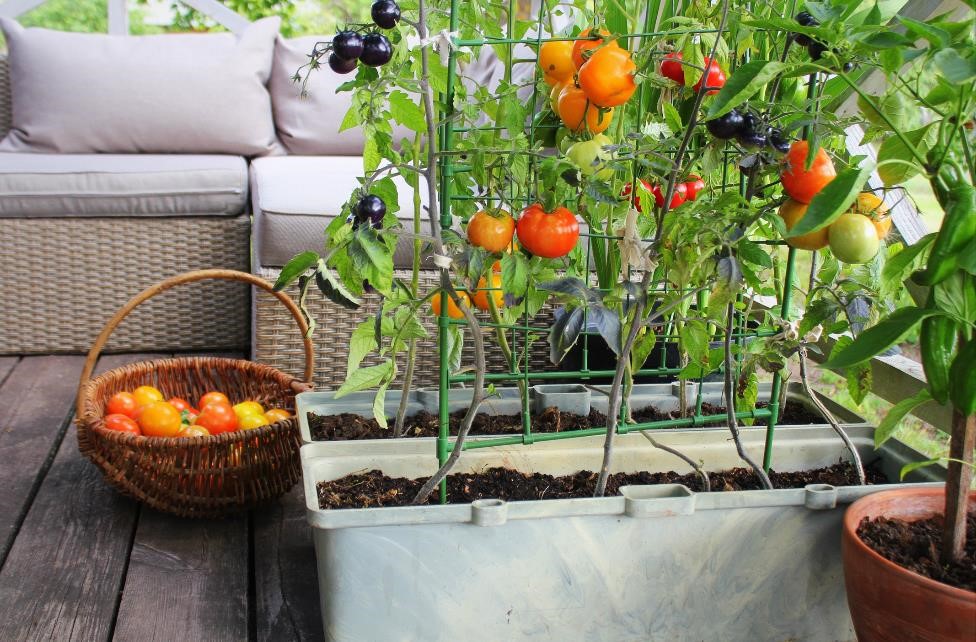How Do I Create A Vegetable Garden In Small Spaces?
A small garden can be a perfect addition to any home, even if you have limited space. A garden can bring joy, beauty, and even fresh produce to your doorstep. All you need is some creativity and basic gardening knowledge. In this article, we will share some ideas and tips for creating a garden in a small space.

First, assess your space
Before you start planning your garden, take a good look at the space you have available. Consider the size, shape, and location of your garden area.
- Size: If you live in an apartment, you may only have a balcony or a small patio at your disposal. In that case, choose plants that can thrive in small pots or hanging baskets. If your garden area is larger, you can plant a combination of raised beds, containers, and in-ground plants.
- Shape: The shape of your garden area can also affect your choice of plants and garden design. If your space is long and narrow, consider planting in rows or creating a winding garden path to create depth. If it's a square or rectangular shape, you can arrange pots or plants in a geometric pattern.
- Location: The location of your garden can also affect your choice of plants. Consider the availability of light, water, and other factors such as wind or shade. For example, if your garden area is in a shady spot, choose plants that don't require a lot of sunlight.
Choose the right plants
Choosing the right plants for your small garden can be tricky, especially if you have limited space. Here are some tips to help you choose the right plants.
- Consider the climate: Choose plants that are suitable for your climate. If you live in a hot and dry area, choose plants that can tolerate high temperatures and low moisture. If you live in a cooler area, choose plants that can thrive in lower temperatures.
- Select plants that suit your garden: Choose plants that suit the conditions in your garden. For example, if your garden area is in a shady spot, choose plants that can thrive without much sunlight.
- Choose plants of different heights and colors: To make your garden look more interesting, choose plants of different heights, colors, and textures. This will create a more varied and attractive garden.
- Plant edibles: Consider planting fruits, vegetables, and herbs. Not only will they provide fresh produce for your home, but they can also add color and texture to your garden.
Design your garden
Once you've selected your plants, it's time to start designing your garden. Here are some ideas to get you started.
- Create a container garden: Container gardening is a great way to grow plants in a small space. Choose pots of different sizes and shapes and arrange them in groups of three or more to create a visually appealing display.
- Make use of vertical space: If you have limited horizontal space, consider using vertical space for your garden. Hang planters from walls, fences, or balconies to create a green wall.
- Group plants according to their needs: Group plants with similar needs together. For example, plants that require full sunlight should be grouped in an area that receives full sunlight throughout the day.
- Create a focal point: Create a focal point in your garden by placing a large plant, statue, or decorative item in a prominent location.
- Add lighting: If you want to enjoy your garden at night, add lighting to highlight your plants and create a cozy atmosphere.
- Accessorize: Make your garden more interesting by accessorizing it with decorative items such as statues, birdhouses, or wind chimes.
Maintain your garden
Maintaining your garden is essential to ensure the health and longevity of your plants. Here are some tips to help you maintain your garden.
- Water regularly: Water your plants regularly, especially during the hot and dry summer months. Most plants require about an inch of water per week.
- Fertilize: Fertilize your plants to promote growth and ensure they receive the necessary nutrients. Choose a fertilizer that is appropriate for your plants.
- Prune and trim: Prune and trim your plants to keep them in shape and promote healthy growth.
- Control pests and diseases: Keep an eye out for pests and diseases that may affect your plants. Use natural pest control methods or appropriate pesticides to protect your plants.
- Harvest crops: If you've planted fruits, vegetables, or herbs, harvest them regularly to ensure they continue to produce new growth.
Conclusion
As you can see, creating a garden in a small space is possible with a little creativity and basic gardening knowledge. By choosing the right plants, designing your garden, and maintaining it properly, you can enjoy fresh produce, beautiful flowers, and a relaxing outdoor space right outside your door.



